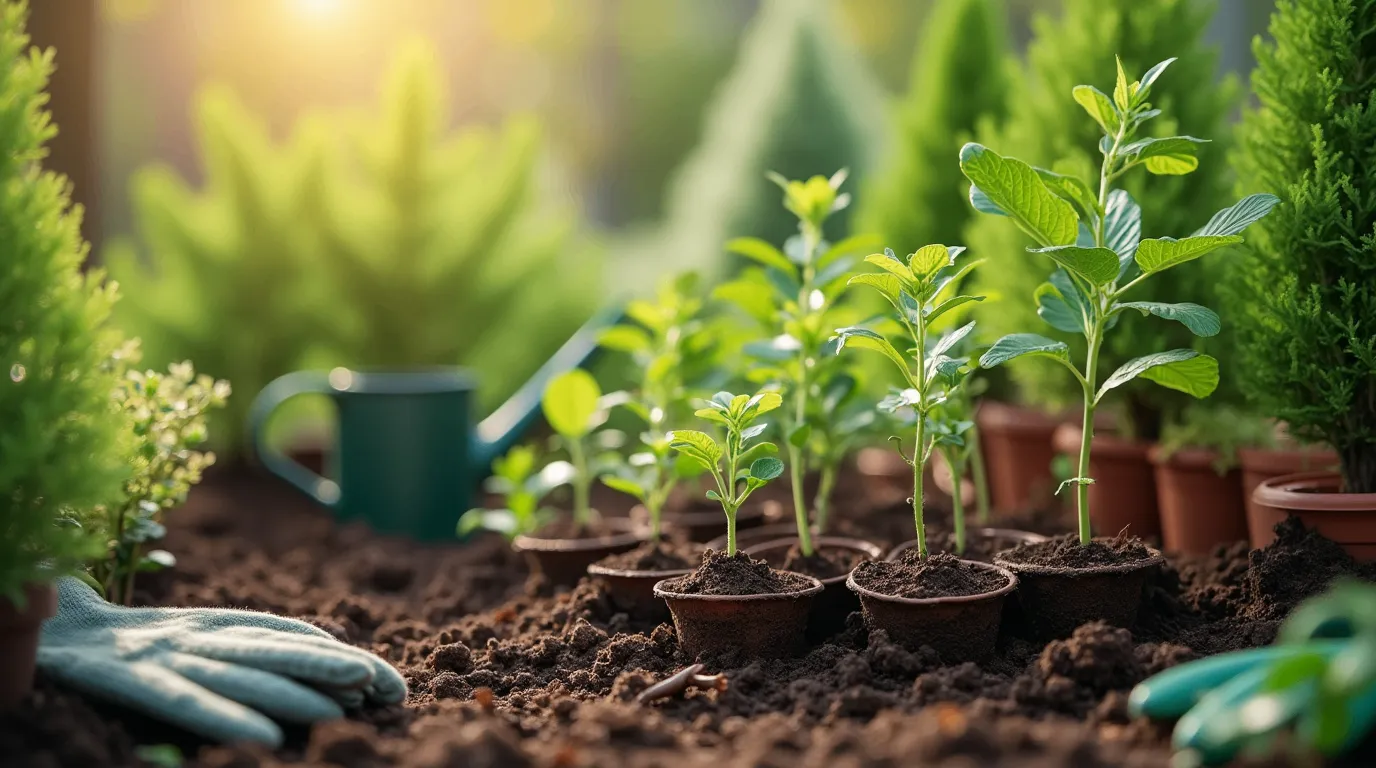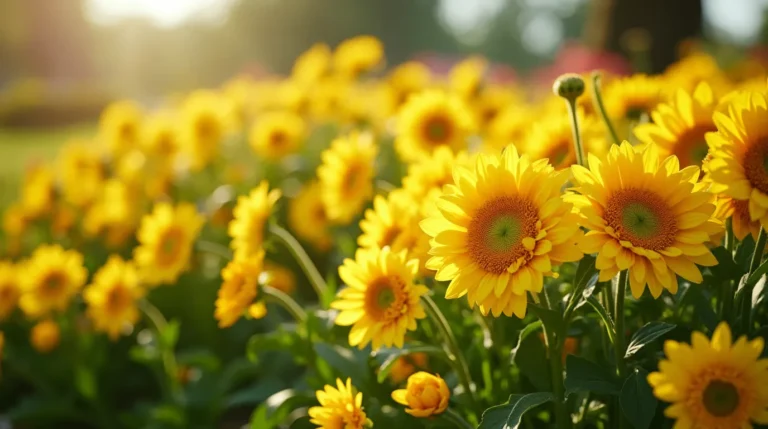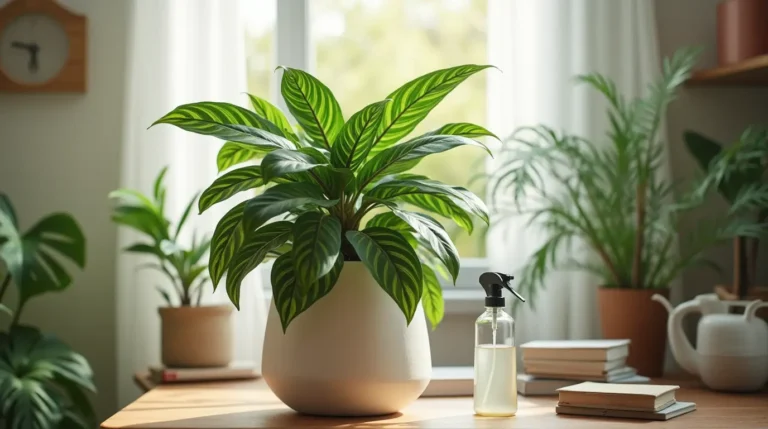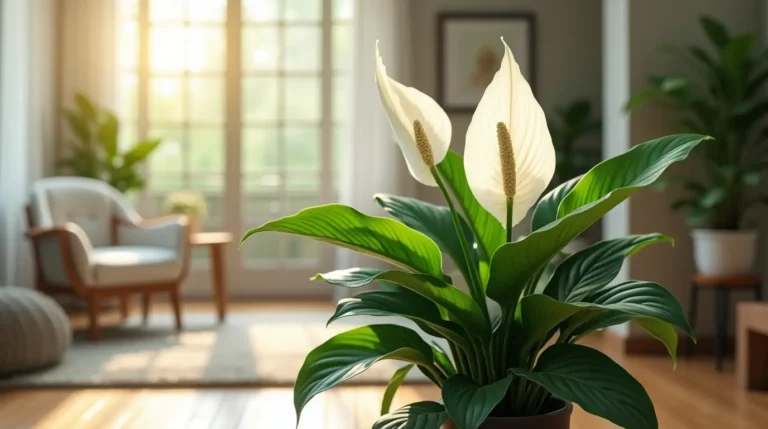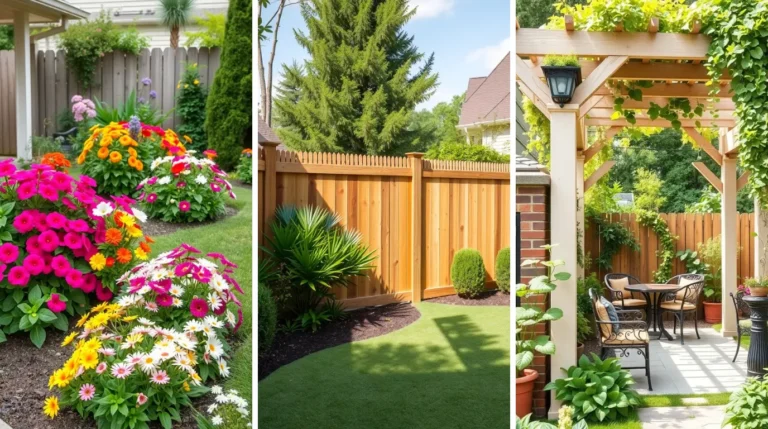The Ultimate Guide to Tree Saplings and Shrub Seedlings 101: Everything You Need to Know
Gardening enthusiasts and homeowners looking to landscape their properties often seek the best ways to cultivate a lush and vibrant environment. Understanding the basics of tree saplings and shrub seedlings is crucial for crafting a thriving garden or backyard oasis. From choosing the right species to mastering essential care techniques, this guide covers everything you need to know about these young plants. Whether you aim to buy tree saplings for a new project or seek gardening tips to nurture your existing landscaping plants, this resource will provide valuable insights into tree care and shrub maintenance. Dive into the world of greenery and discover how to create a sustainable and beautiful landscape.
Introduction to Tree Saplings and Shrub Seedlings
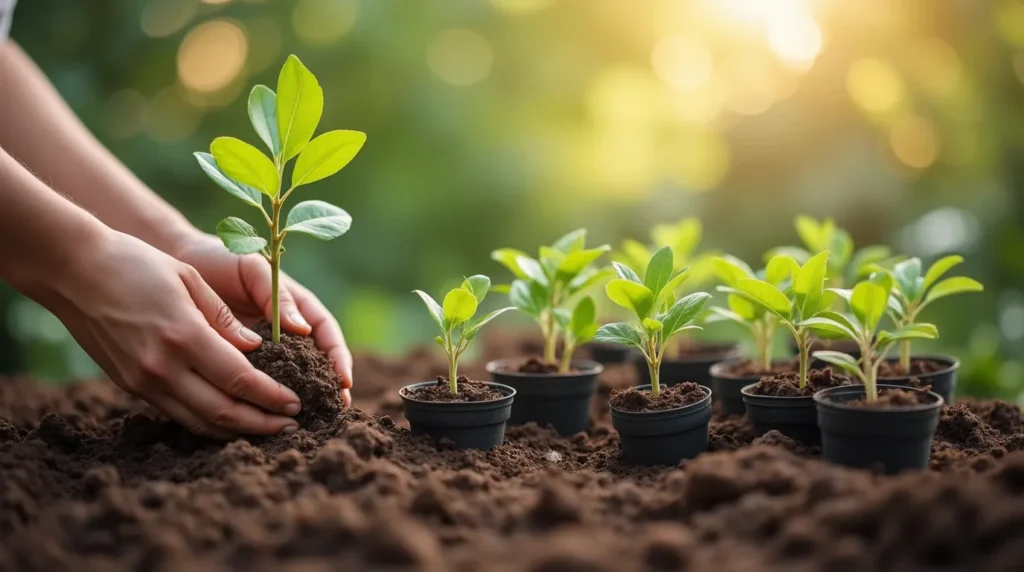
What Are Tree Saplings?
Tree saplings are young trees that have recently emerged from seeds and are in the early stages of growth. Typically, saplings are between one and five years old and range from 2 to 10 feet in height, depending on the species. During this phase, saplings are particularly vulnerable and require careful tree care to ensure they establish strong roots and a healthy structure. Tree saplings are crucial for reforestation projects, urban landscaping, and personal gardening endeavors. When you buy tree saplings, it’s important to consider factors such as soil type, climate, and the specific needs of the species you select. Proper planting techniques and ongoing maintenance will help saplings thrive and eventually mature into robust trees, contributing to a lush and sustainable environment.
Defining Shrub Seedlings
Shrub seedlings are young plants that represent the initial growth stage of shrubs, typically less than one year old. These seedlings usually measure a few inches to a foot in height and possess delicate root systems. Shrubs, unlike trees, tend to have multiple stems and are generally shorter, making them ideal for creating dense borders, hedges, and ornamental garden sections. When selecting shrub seedlings for your garden, it’s essential to consider the specific growth habits and environmental requirements of the shrub species. Proper planting and shrub maintenance techniques, such as adequate watering, mulching, and protection from pests, are vital for nurturing these young plants. By understanding the unique needs of shrub seedlings, gardeners can ensure that these plants grow into healthy, mature shrubs that enhance the aesthetic and ecological value of their landscapes.
Importance of Young Plants in Landscaping
Young plants, such as tree saplings and shrub seedlings, play a pivotal role in landscaping. These plants are easier to establish and manage compared to mature trees and shrubs, making them ideal for new landscaping projects. Integrating young plants into your garden not only allows for more design flexibility but also promotes a healthier ecosystem. Tree saplings provide shade, reduce soil erosion, and improve air quality as they grow. Similarly, shrub seedlings contribute to soil stability, offer habitat for wildlife, and add visual appeal to garden spaces. When you buy tree saplings and shrub seedlings, you are investing in the long-term health and beauty of your landscape. Additionally, growing young plants can be a cost-effective way to achieve a lush garden over time, as they are generally less expensive and easier to transport than mature plants. Proper care and maintenance will ensure these young plants thrive and contribute to a sustainable and vibrant environment.
How to Choose and Buy Tree Saplings
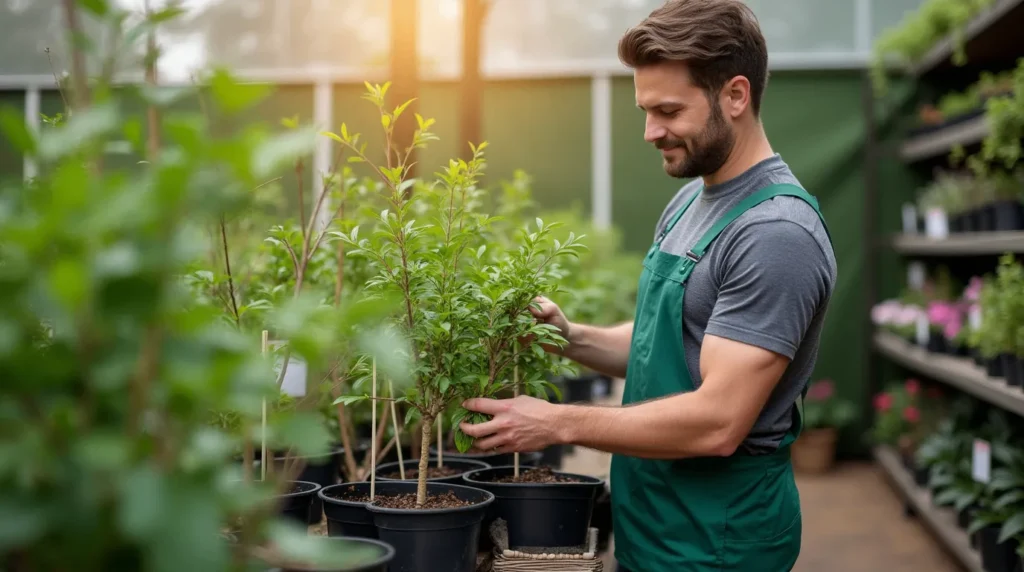
Factors to Consider When Buying
When you buy tree saplings, several factors need to be taken into account to ensure successful planting and growth. First, consider the species of tree that is best suited to your local climate and soil conditions. Native species typically need less upkeep and are more resilient to local pests and diseases. Next, evaluate the growth rate and mature size of the tree to ensure it fits well within your garden space and won’t interfere with structures or power lines. Inspect the saplings for any signs of damage or disease, such as broken branches or discolored leaves. Additionally, consider the time of year; planting in the fall or early spring can give saplings a better chance to establish roots before extreme weather conditions. By taking these factors into account, you can make a well-informed decision that will contribute to a healthy and thriving landscape.
Best Places to Buy Tree Saplings
Choosing the right place to buy tree saplings is crucial for ensuring you get healthy, quality plants. Local nurseries are often the best option, as they typically offer species well-suited to your region’s climate and soil. Staff at local nurseries can also provide valuable gardening tips and guidance tailored to your specific area. Online nurseries are another convenient option, offering a wide variety of tree saplings that can be shipped directly to your home. However, it’s important to research the reputation and customer reviews of online sellers to ensure you receive healthy plants. Botanical gardens and arboretums sometimes sell saplings during seasonal sales or events, providing another trustworthy source. Lastly, community tree-planting programs or agricultural extensions often offer saplings at a lower cost or even for free, making them an excellent resource for budget-conscious gardeners. By selecting a reputable source, you can ensure the success and longevity of your new tree saplings.
Common Mistakes to Avoid
When you buy tree saplings, avoiding common mistakes can significantly improve their chances of thriving. One frequent error is planting saplings too deep or too shallow, which can hinder root development. Ensure the root collar—where the roots meet the trunk—is level with the ground. Another mistake is neglecting to water the saplings adequately, especially during the first few years. Overwatering or underwatering can both be detrimental, so it’s essential to maintain consistent soil moisture. Additionally, failing to protect saplings from pests and diseases can lead to early deterioration. Use appropriate mulching and consider protective barriers if local wildlife is a concern. Lastly, choosing the wrong species for your soil type and climate can result in poor growth or even death of the saplings. Conduct thorough research or consult with local experts to select the best trees for your environment. By being mindful of these pitfalls, you can set your tree saplings up for successful growth.
Essential Gardening Tips for Saplings and Seedlings
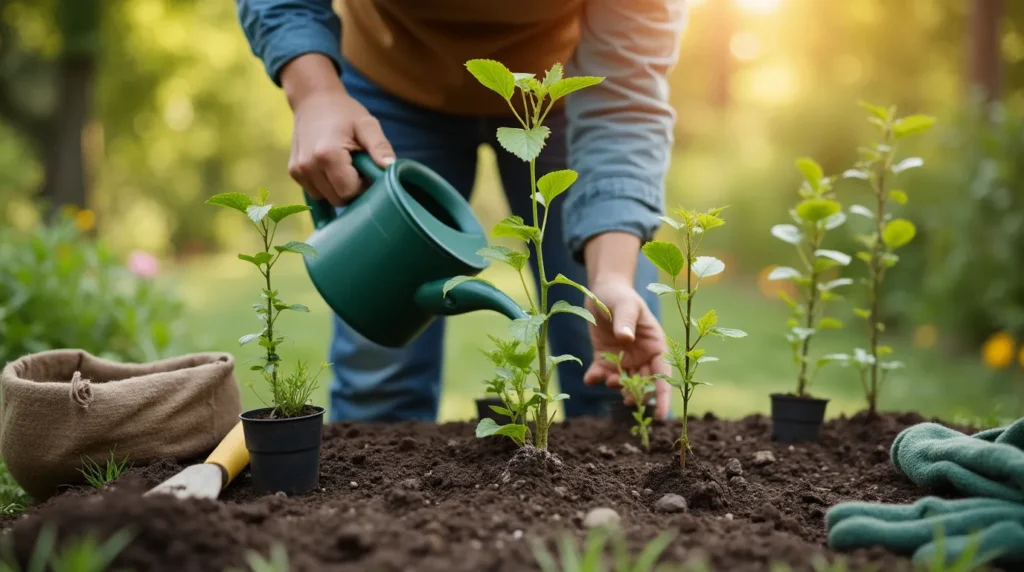
Tree Care Basics
Proper tree care is essential for the successful growth of saplings. Begin by ensuring that your saplings are planted in well-draining soil and receive adequate sunlight according to the species needs. Consistent watering is crucial, particularly during the first two years, to help saplings establish a strong root system. Mulching around the base can retain soil moisture and regulate temperature, but be careful not to pile mulch against the trunk, as this can cause rot. Regularly inspect your saplings for signs of pests or disease, and address any issues promptly using eco-friendly treatments. Pruning is another vital aspect of tree care; remove any dead or damaged branches to encourage healthy growth and structure. Lastly, staking may be necessary for young saplings in windy areas, but ensure the ties are not too tight to allow for natural movement and growth. By following these tree care basics, you can foster healthy, robust trees that will thrive for years to come.
Shrub Maintenance Essentials
Maintaining shrub seedlings requires attention to a few key factors to ensure they grow into healthy, mature plants. Start by planting them in well-draining soil and a location that offers the appropriate amount of sunlight for the specific species. Consistent watering is essential during the first year, particularly during dry spells. Applying a layer of mulch around the base of the seedlings helps retain moisture and suppress weeds, but make sure the mulch doesn’t touch the stems to prevent rot. Pruning is crucial for shaping the shrubs and promoting dense growth; remove any dead or damaged branches and trim to maintain the desired form. Fertilize sparingly, as over-fertilization can harm young shrubs. Additionally, be vigilant about pests and diseases, and treat any issues promptly with environmentally friendly solutions. By adhering to these shrub maintenance essentials, you can cultivate vibrant, healthy shrubs that enhance your garden’s beauty and biodiversity.
Landscaping Plants for Beginners
For gardening novices, selecting the right landscaping plants can make a significant difference in the ease and success of your gardening efforts. Opt for hardy, low-maintenance species that are well-suited to your local climate and soil conditions. Tree saplings such as maples and oaks are robust options that provide shade and aesthetic appeal as they mature. Shrub seedlings like boxwood and hydrangea are excellent choices for adding structure and color to your garden. These plants are relatively easy to care for and resistant to common pests and diseases, making them ideal for beginners. Additionally, consider integrating perennials like lavender and hostas, which return year after year with minimal upkeep. When planting, follow basic tree care and shrub maintenance guidelines to ensure your new plants thrive. By starting with these beginner-friendly landscaping plants, you can create a beautiful, sustainable garden with confidence and ease.

